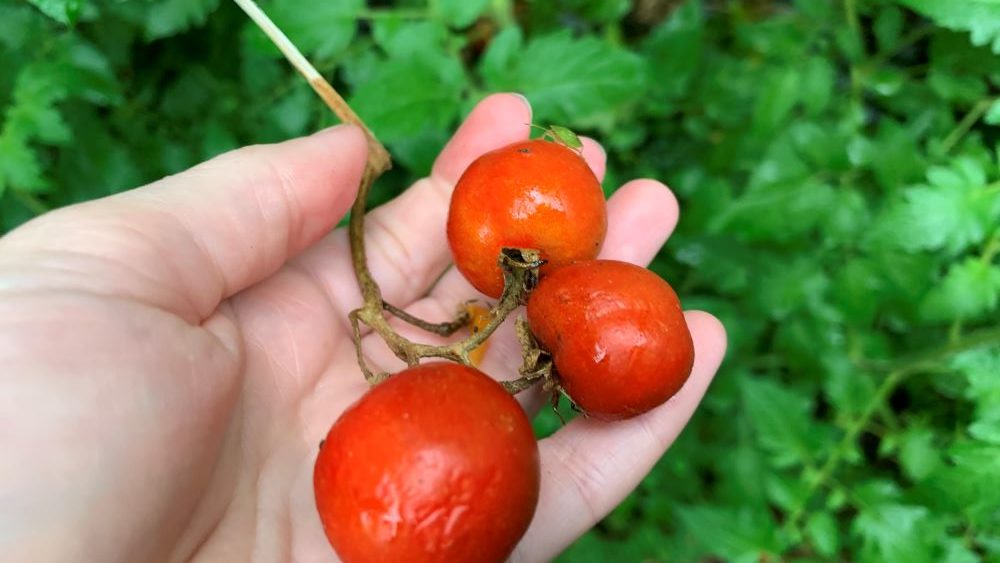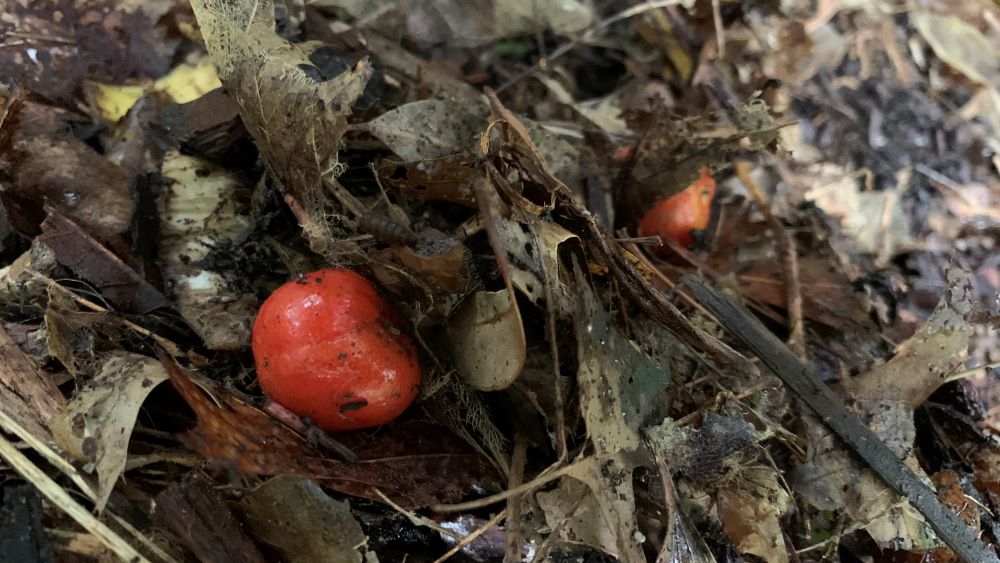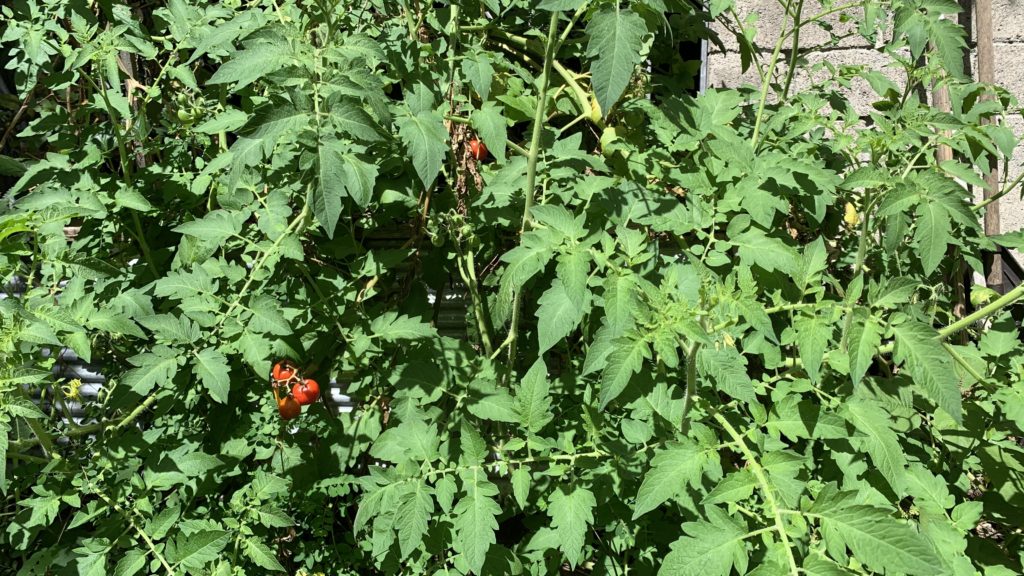Composting tomatoes is safe and they will add lots of nutrients to your composting pile. Chop large tomatoes into pieces and remove any stems with leaves. Technically you can compost tomato plants but it is better to break them down in a hot composting system, check that they are not diseased and avoid using the compost on your vegetable garden.
This article will explore how to compost tomatoes, tips for composting to avoid flies and ants and the safe way to compost tomato plants.

How to compost tomatoes
Here are my easy tips for composting tomatoes at home. Take these steps to help the tomatoes to break down quickly, avoid attracting flies and ants and turn them into rich humus for your garden.
You can safely break down old, rotting tomatoes or tomatoes with mold. Avoid composting any tomatoes that are affected by disease or pests as these can spread through your compost and affect your next crop.
1. Chop large tomatoes into smaller pieces
Large tomatoes should be chopped into smaller pieces before being added to a compost pile or bin. This will help them to break down quicker and so that they are less likely to attract ants. You can chop the tomatoes into ½ inch cubes or slices inside before taking them to your compost bin.
Another option is to simply throw the tomatoes onto the pile, and grab your spade to chop and mix them in. Small pieces will break down quicker because the soil bacteria and worms have more surface area to access to break the tomato down.
Small cherry tomatoes can be added whole and they will burst and break down quickly.

The flesh, skin and stems will all break down quickly. There is a chance that the seeds will survive the composting process and will not be broken down. This means that they can sprout when you put the compost into your garden.
I the tomatoes are heirloom varieties, then they can be left to grow and produce tomatoes if you like. If they come from a commercial hybrid variety, they may not produce a crop at all.
It is usually best to remove any tomatoes that pop up from compost, particularly if you have grown tomatoes in the same bed the year before. They can develop disease or not produce a good crop.
2. Dig tomatoes into the compost pile
Dig tomatoes added to your compost pile through the compost mix. This will help them to make contact with the rest of the compost ingredients and soil bacteria to help them to break down. Mixing the ingredients together is essential to help compost to break down as quick as possible.
Think of compost like a cake, you need to mix the ingredients together for the recipe to work.
3. Add brown material to absorb the extra moisture

After adding tomatoes it is important to add extra brown materials to absorb the extra water. Tomatoes contain a huge amount of moisture which can cause your compost bin to become soggy.
Add 1 part tomatoes to 3 parts brown material like straw, hay, sugar cane mulch or fall leaves. Mix it together and your compost bin will keep in balance.
Adding brown material will also help to deter flies and ants. This is because it will help to hide the tomatoes and protect them from flying or crawling creatures. You can add a small amount of garden lime on your compost pile 1-2 times over spring and summer to reduce the acidity of the pile after adding tomatoes.
4. Only add small amounts of tomatoes
The key to keeping your compost pile in balance is to only add small amounts of tomatoes at any one time. If you have a small compost pile, start by adding a small bowl of cherry tomatoes or 2-3 larger tomatoes cut into pieces.
Mix the tomatoes through and wait for them to fully break down before adding more. Tomatoes break down fast so you can usually start to add more after 2 weeks.
Work out how quickly your compost pile can break down tomatoes and find the right balance.
Tips for composting tomato plants

Tomato plants can be added to your compost pile if they are not affected by pest or disease, are cut into small pieces and if you compost them separately. It is best if this compost is not be added back to your vegetable garden in case there were any diseases left on the plants that could not be seen and were not broken down in the composting process.
Hot composting is best for tomato plants because the temperatures will increase to where they can kill any pathogens left on the plant.
For more on hot composting, check out my article here: Why does a compost heap get hot? + the secret ingredient
For me, I don’t like to compost my tomato plants but will instead add them to my green recycling bin. The plant material in this bin is taken to a commercial composting center where the materials are used for large commercial or community projects.
Commercial composting processes will break down any pathogens so that they are carried to the next location.
Can I Compost Tomatoes? | Summary
Tomatoes are a great compost ingredient and will break down quickly. Add extra brown material to your compost pile when you add tomatoes to absorb the extra moisture and keep the pile in balance. If you have too many tomatoes for your compost bin, add some to your worm farm and your worms will love it.
For more on how to add tomatoes to your worm farm, check out my article here: Feeding Worms Tomatoes | Guide for Red Wigglers and Worm Bins
Tomato plants can be composted in a separate pile, if they don’t carry disease and it is best if they are hot composted. The easiest way to deal with old tomato plants is to put them in your green waste bin to be composted commercially.
I am an accredited practicing dietitian, experienced gardener and a dedicated cook. I love writing and sharing my experience so you can learn from my successes and mistakes.
